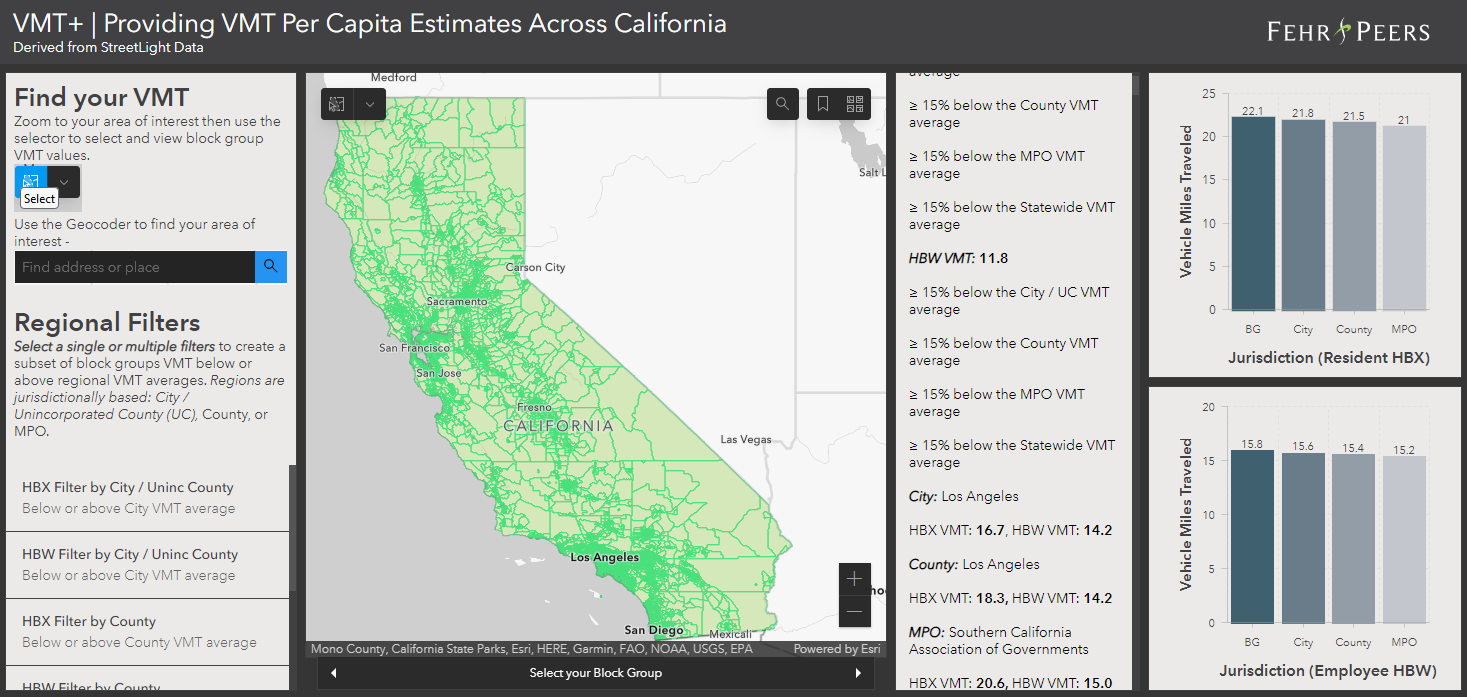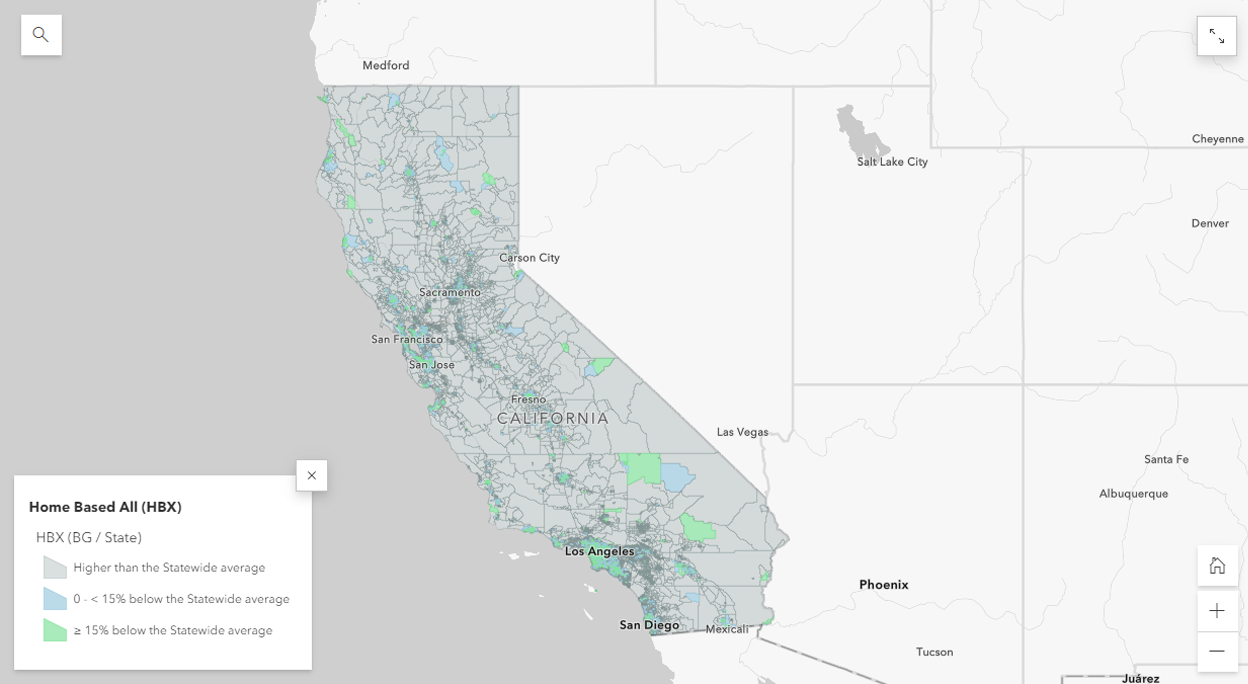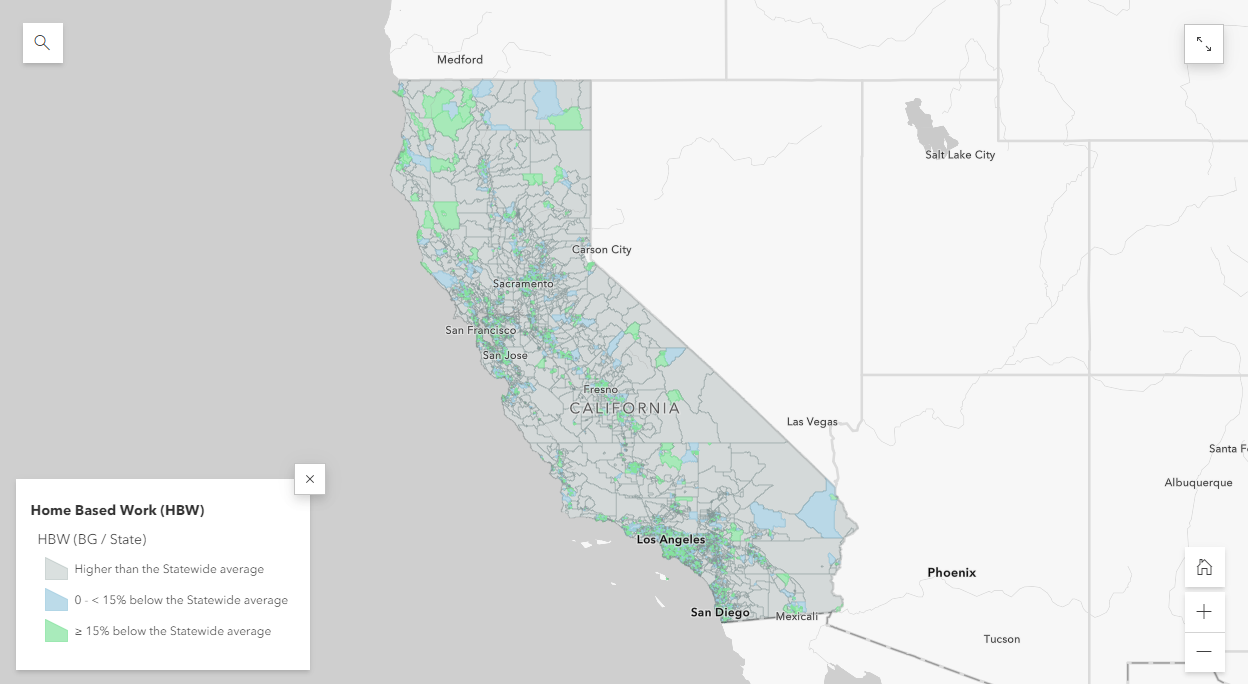Find Your VMT With VMT+
Open VMT+ in Browser →
Home-based VMT per resident
How many vehicle-miles are driven per person living in the Census Block Group to and from their homes each day? This estimate considers all types of trips, and the statewide average is 21 vehicle-miles per person.
Home-based work VMT per worker
How many vehicle-miles are driven to and from work each day per person working in the Census Block Group? This estimate considers only trips to and from work, and the statewide average is 15 vehicle-miles per person.
Other Applications
CEQA & VMT Analysis
Grant & Funding Applications
Land Use Assessments
Walk Score Validation
Greenhouse Gas Analysis
About the Data
While we hope these VMT estimates simplify and enhance your planning process, Fehr & Peers makes no warranty regarding the data’s accuracy, quality, or appropriate use. This data set is intended to complement other VMT data sources, such as regional or local travel demand models. Since the VMT estimates are new and have not been fully validated or peer reviewed, the data is offered as-is and should be thoroughly reviewed for reasonableness in any applications. We welcome all suggestions for improving the data or tool.
Contributors
Mike Wallace
Forecasting Practice Leader
Email Me
Ron Milam
Forecasting Practice Leader
AICP, PTP
Email Me
Patrick McDonough
Database Engineer
Email Me
VMT+ is a Fehr & Peers Research & Development project. Data provided by StreetLight Data.






